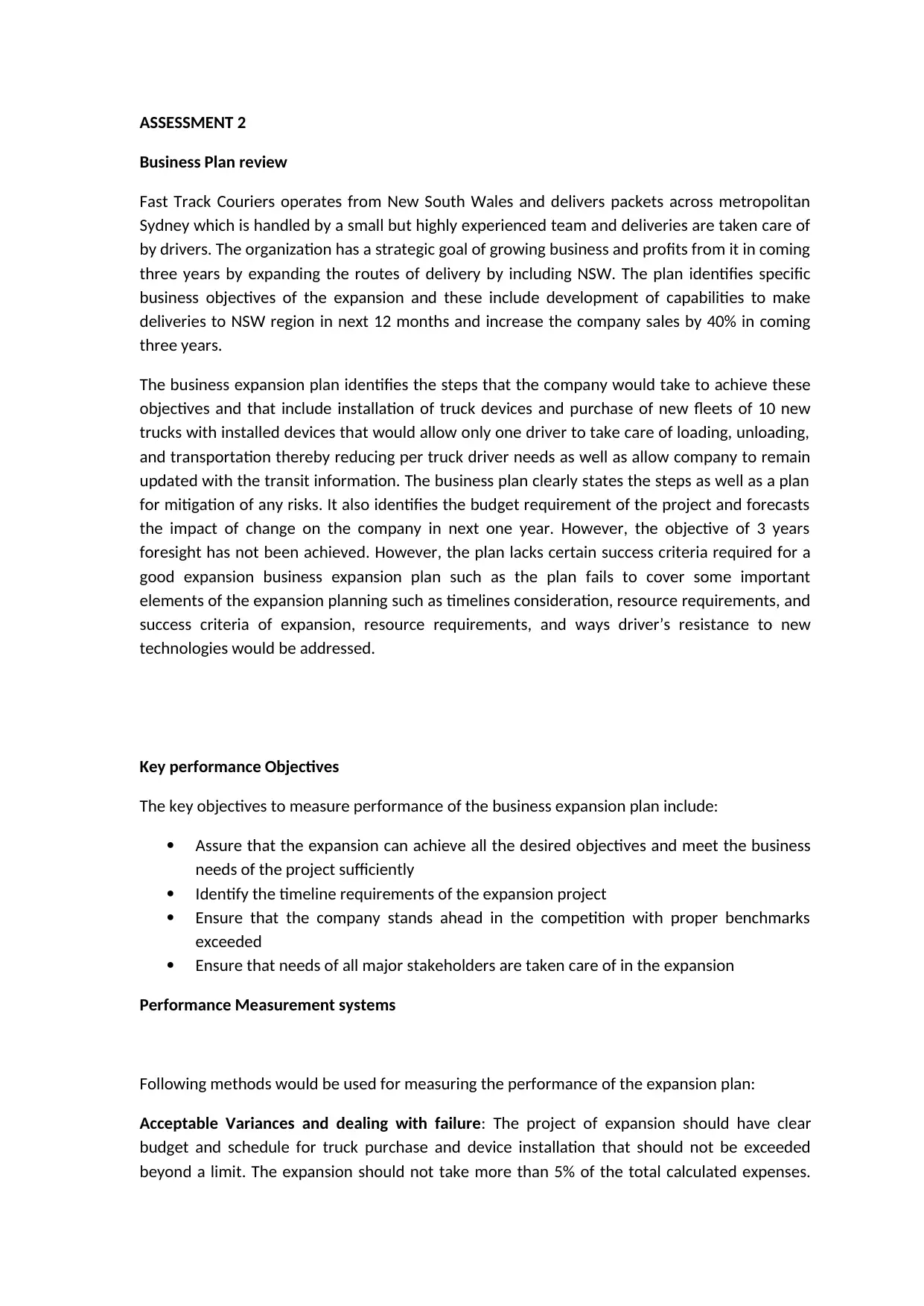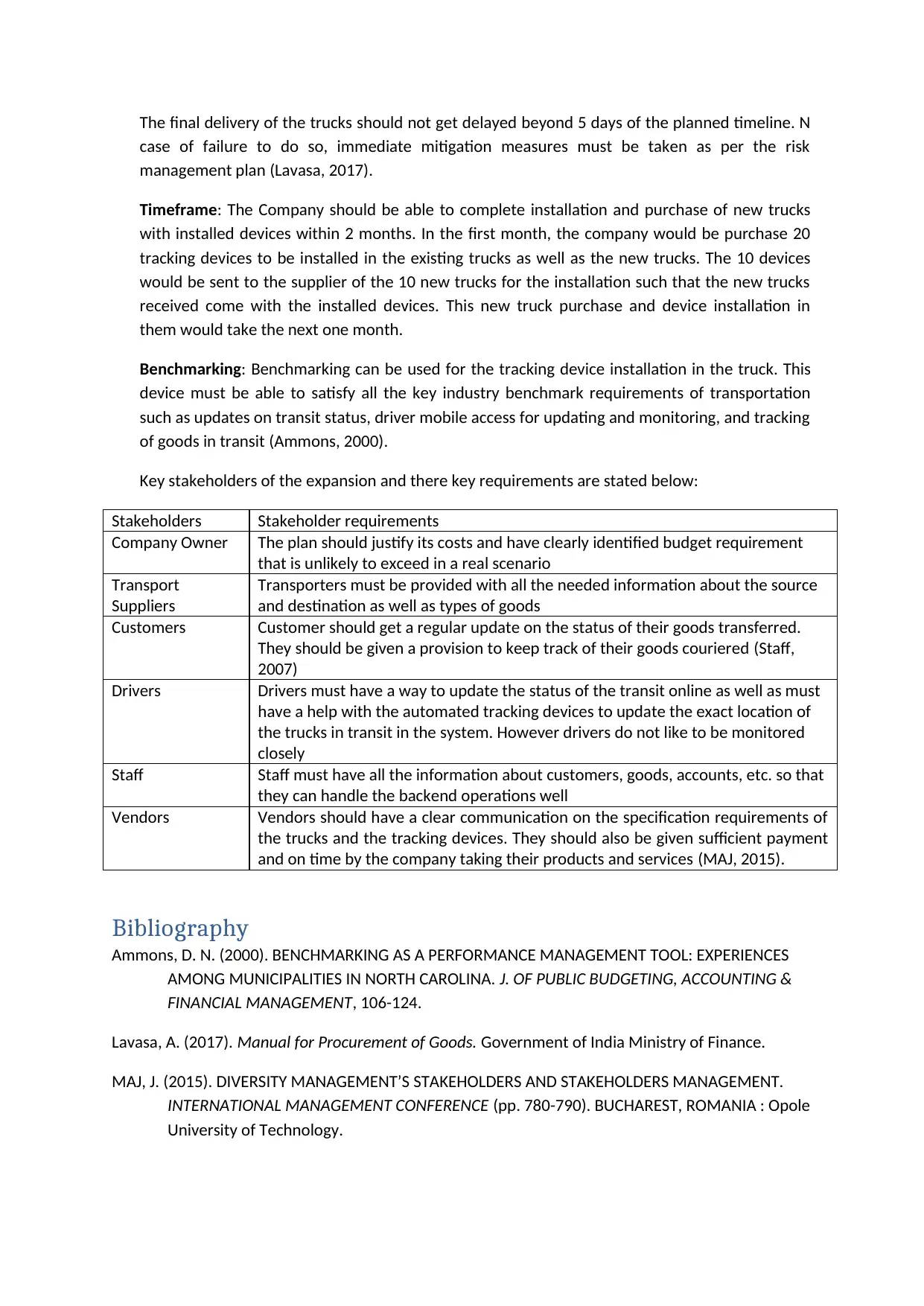BUS200: Business Plan Review of Fast Track Couriers Expansion Plan
VerifiedAdded on 2020/05/28
|3
|945
|84
Report
AI Summary
This report provides a review of the business plan for Fast Track Couriers, which aims to expand its delivery routes within New South Wales. The plan outlines objectives such as increasing sales and developing delivery capabilities, including installing tracking devices and purchasing new trucks. While the plan details steps and risk mitigation, it lacks crucial elements like timelines, resource requirements, and success criteria. The review highlights key performance objectives, including achieving expansion goals, defining timelines, exceeding benchmarks, and addressing stakeholder needs. It also explores performance measurement systems, acceptable variances, and benchmarking techniques. The report also identifies the key stakeholders of the expansion and their requirements, including company owners, transport suppliers, customers, drivers, staff, and vendors. Overall, the report assesses the strengths and weaknesses of the business plan, offering insights into its potential for success and areas needing improvement.
1 out of 3










![[object Object]](/_next/static/media/star-bottom.7253800d.svg)